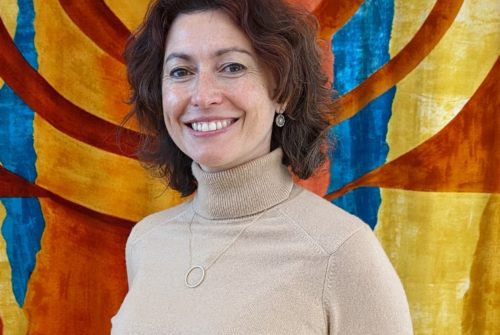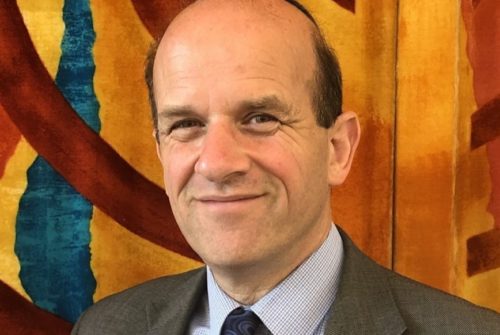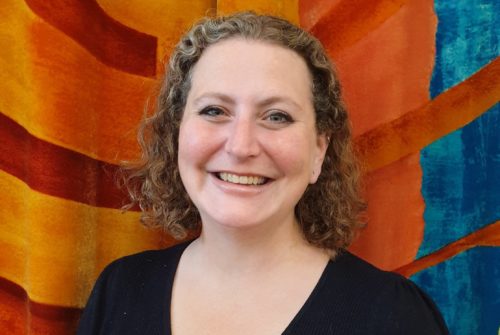Just before Pesach this year the Institute of Jewish Policy Research brought together the results of surveys asking British Jews which of the following four aspects of Jewish life they observe. (IJPR Jonathan Boyd – Passover Seder: The perfect Jewish recipe quoting The Jewish Identity of European Jews March 31,2022)
They asked whether respondents chose Kosher meat, fasted on Yom Kippur, attend a Pesach seder or light Shabbat candles. At our Friday night service I asked our congregation to guess which order these observances rank in popularity. They guessed right.
This is the answer in ascending order – 45% of British Jews choose Kosher meat, 54% light Shabbat candles regularly, 66% fast on Yom Kippur, but the runaway most popular observance happened last night. 77% of British Jews attend a Pesach Seder.
British Jews are more likely to attend a Seder than Jews in most other parts of the world. The average for Europe of Seder attendance is 74% with Jews in Belgium the only Europeans more likely than Jews is Britain to be together for Seder. In America the figure is 62%. And in Israel? 93% of Jews attend a Seder.
Why is this the most popular Jewish observance? IJPR Director Jonathan Boyd is pretty sure that the data tells us why. It is because Seder is a family occasion that takes place in the home. You can be at a Seder for all kinds of reasons – to connect with the religious obligation that we heard about in our Torah portion, to connect with your own family, to connect with Jews worldwide who are doing the same thing at the same time. Jewish research tells us that what happens in the Jewish home is more influential than synagogues, schools or even our youth movements on who we become as Jews – so that home observance of Seder really matters.
What’s great about a seder is that is the telling of the big story of Judaism, our foundational core as a people. It uses all of our senses: taste, sight, touch, hearing and smell to reinforce an extra sense – which could be called Yiddishkeit if that word were not so Askhenazi biased – that ineffable sense of being Jewish that helps you to know what the Jewish value might be in any given situation – of being part of Am Yisrael, this people Israel.
Of course where the family or household set up works this way Seder has another critical ingredient – it is multigenerational and can equally engage every generation from the youngest child to the most elderly adult. But even if a Seder is single generation it’s power is still there because you can know that, at other Sederim in other homes, children will be imbibing their sense of Jewishness with every bit of matzah, chorus of dayenu, smell of charoset, dipping of karpas and sight of their family together for such a special time.
Jonathan Boyd counsels this: “I would pay very close attention to the adjectives people use to describe their seder experience. If the seder is tedious, they are learning that Judaism is tedious. If the seder is warm and inviting, they are learning that Judaism is warm and inviting. If the seder is contentless, they are learning that Judaism is contentless. If seder is rich in meaning, they are learning that Judaism is rich in meaning. In short, the seder is Judaism in microcosm, and whatever values, ideas and feelings we convey during it will be experienced by others as everything that is good – or bad – about what Judaism has to offer.”
I have to say that a challenge that Rabbi Debbie and I have had this year, and in years gone by is attracting members of EHRS to come to pre-pesach learning and workshops on making our Sederim the best they can be. We normally do not worry about numbers attending a particular kind of study because it is as important to work with one person as a hundred – but this one does bother us.
Our Seder prep classes a couple of weeks ago just didn’t fly, and nor did they in 2021 or 2020, though in that year hints and tips for a first online seder were enthusiastically taken up. It may be that the Sederim of EHRS members are just terrific and need no work to refresh or make them more engaging – or it may be that we settle for Sederim that don’t really meet the needs of all generations and all participants. Please do let us know if there is help that you would like for your Seder next year – we would be so delighted to build it with you. We know that a warm, inviting Seder which is rich in meaning is a foundation block of great Jewish experience.
The Seder is truly for everyone. The images of the four children tell us so – and these are not only young children – we are all children of somebody. The wise child (who already knows so much and is thirsty for more Jewish knowledge) is just as welcome as the simple child (whose questions need to be answered by experiencing the beauty of a sincere and well prepared Seder). The child who does not know how to ask (who needs to be guided with love and care into Jewish knowledge and experience and helped to enjoy it), this child is just as welcome as the wicked child.
What about this wicked child? Rabbi Colin Eimer created a great learning session for Reform Rabbis this week based on the art of Haggadot going back six hundred years. One of the most telling examples of that art being layered in meaning is the depiction of the wicked child through the ages.
Contemporary haggadot often depict the four children as mixed up in characteristics – showing that we all have elements of all the four children in us. Many 20th century Haggadot show the wicked child scoffing at the Seder – leaning back in a chair while smoking at the Seder table in a notable 1930’s American Hagaddah, assimilating into the more dangerous aspects of majority culture such as a hagaddah from Germany where the wicked child looks like a Hitler youth, or sneering at their parents. Haggadot from the 14th to 19th century most often depict the wicked child as a soldier holding a weapon – this is the Jewish mercenary, making their living from violence – like the Syrian mercenaries currently taking Putin’s bounty to fight for the Russian army in Ukraine.
It is very important to remember that this wicked child, whatever guise they might be in is welcome to the Seder. They have to be included because the point of the Seder is to stir us to the best of Jewish values, keeping connections with family even when tenuous, creating and doing the hard work to maintain loving and secure homes, supporting each other as a people and most importantly working for freedom everywhere in the world for everyone.
In this year ahead, we will be working for the freedom of Ukraine, playing our part as a country, as Jews and as a community. But we will also be inviting the Russian people to value freedom for themselves as well as for the countries around them – we have to invite the rasha to the table. We will be working for the ability of refugees wherever they may originate to live in freedom. We will be upholding the Jewish principle that our feast of freedom, so important to us as a people, is a feast of freedom for all and an inspiration for us to be a people that makes change.
I hope that our Sederim, last night and tonight will bring us one step closer to Jerusalem, that ideal state of peace and one step closer to a world redeemed for all.



